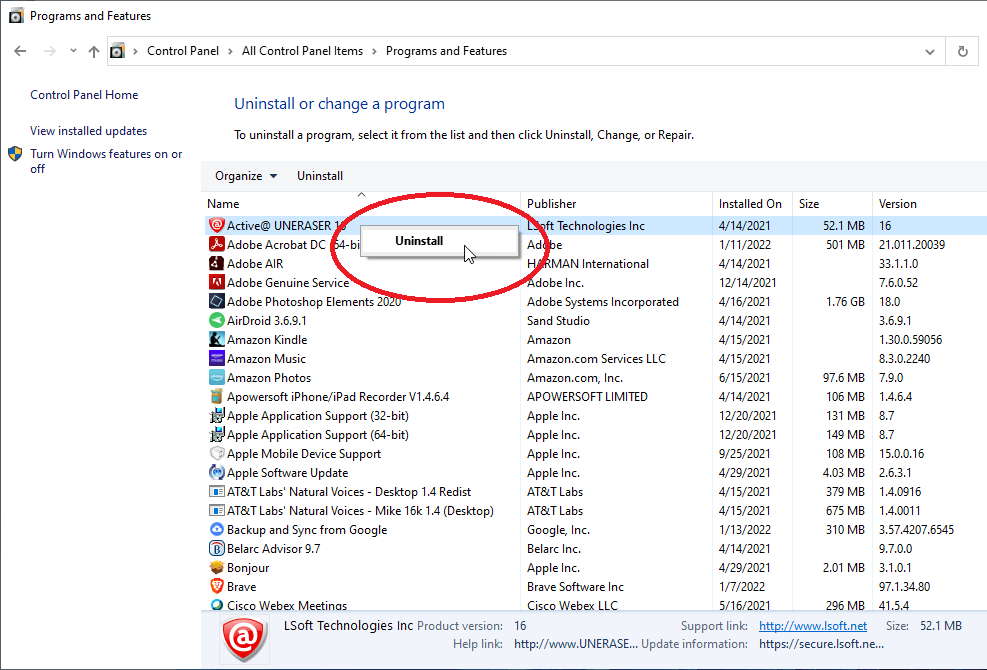
In the ever-evolving landscape of computing, the ability to manage software efficiently is essential for maintaining system performance, optimizing storage space, and ensuring a clutter-free environment. Windows 10 offers users a variety of tools and methods to uninstall programs, allowing for easy removal of unwanted or unused software from their devices. In this exhaustive guide, we’ll explore the intricacies of uninstalling programs in Windows 10, covering the various methods, tips for effective removal, and troubleshooting common issues that may arise during the process.
Understanding the Importance of Program Uninstallation: Over time, users may accumulate a multitude of programs on their Windows 10 devices, ranging from productivity tools and multimedia applications to utilities and games. While many of these programs serve valuable purposes, others may become obsolete, redundant, or simply unwanted. Uninstalling unnecessary programs helps streamline system resources, declutter the interface, and free up storage space, leading to improved performance and a more efficient computing experience.
Methods for Uninstalling Programs in Windows 10: Windows 10 offers several methods for uninstalling programs, each catering to different user preferences and requirements. Here are the primary methods for uninstalling programs in Windows 10:
1. Using the Settings App:
- Open the Settings app by clicking on the Start menu and selecting the gear icon.
- In the Settings app, click on “Apps.”
- Select “Apps & features” from the left sidebar.
- Scroll through the list of installed apps and select the program you want to uninstall.
- Click on the program, then click the “Uninstall” button.
- Follow the prompts to complete the uninstallation process.
2. Using the Control Panel:
- Open the Control Panel by typing “Control Panel” in the search bar and selecting it from the search results.
- In the Control Panel, click on “Programs.”
- Click on “Programs and Features.”
- Scroll through the list of installed programs, right-click on the program you want to uninstall, and select “Uninstall.”
- Follow the prompts to complete the uninstallation process.
3. Using Third-Party Uninstaller Software:
- There are numerous third-party uninstaller programs available for Windows 10 that offer advanced features and capabilities beyond the built-in uninstallation methods. Some popular options include Revo Uninstaller, IObit Uninstaller, and Geek Uninstaller. These programs often provide additional features such as batch uninstallation, leftover file removal, and registry cleaning.
Tips for Effective Program Uninstallation: To ensure a smooth and efficient uninstallation process in Windows 10, consider the following tips:
- Review Installed Programs: Regularly review the list of installed programs on your device to identify and uninstall any unnecessary or unused software.
- Check for Built-in Uninstallation Tools: Some programs come with their own uninstallation tools or wizards that may be accessible through the program’s Start menu folder or installation directory.
- Restart Your Computer: After uninstalling a program, consider restarting your computer to complete the removal process and ensure that any associated files or processes are terminated.
- Monitor for Leftover Files: After uninstalling a program, check for any leftover files, folders, or registry entries that may remain on your system. You can use third-party uninstaller software or manual cleanup methods to remove these remnants.
Troubleshooting Common Uninstallation Issues: Despite its simplicity, uninstalling programs in Windows 10 may occasionally encounter issues or errors. Here are some common problems and their potential solutions:
- Program Won’t Uninstall: If a program refuses to uninstall, try restarting your computer and then attempting the uninstallation process again. If the problem persists, you may need to use third-party uninstaller software or advanced troubleshooting methods.
- Incomplete Uninstallation: If a program appears to uninstall successfully but leaves behind leftover files or registry entries, you can use third-party uninstaller software or manual cleanup methods to remove these remnants.
- Missing Uninstall Option: If you cannot find the uninstall option for a program in the Settings app or Control Panel, try accessing the program’s Start menu folder or installation directory to see if it includes its own uninstallation tool or wizard.
Conclusion: In conclusion, uninstalling programs in Windows 10 is a straightforward yet essential task for maintaining system performance, optimizing storage space, and decluttering the interface. Whether you choose to use the built-in uninstallation methods provided by Windows 10 or opt for third-party uninstaller software, regular removal of unnecessary or unused programs helps ensure a more efficient and streamlined computing experience. By following the methods, tips, and troubleshooting strategies outlined in this guide, you can effectively manage your installed programs, resolve common uninstallation issues, and keep your Windows 10 device running smoothly. So go ahead, start decluttering your system by uninstalling unnecessary programs in Windows 10 today, and enjoy a cleaner, more efficient computing experience!